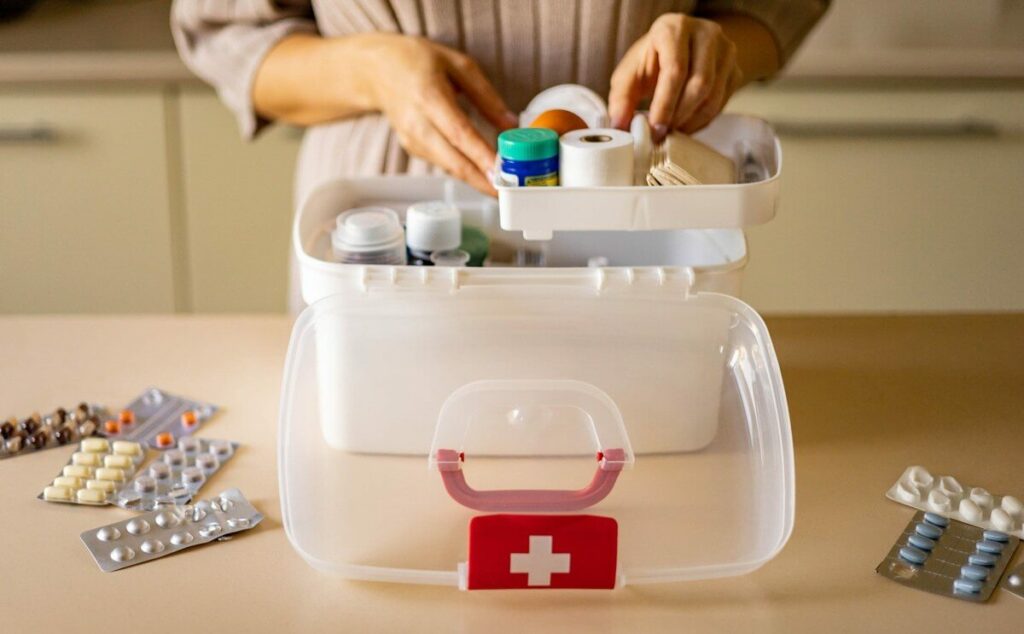Why Medicine Cabinet Chaos is Dangerous: The Risks of Expired Drugs
A disorganized medicine cabinet isn’t just an aesthetic issue; it’s a potential threat to your health and the well-being of your loved ones. The primary danger lies in expired drugs. After the expiration date printed on the packaging, the chemical composition of the medication can change. At best, the drug will lose its effectiveness and won’t provide the necessary relief. At worst, it can become toxic and cause unwanted, sometimes dangerous, side effects.
Beyond this, a lack of medication tracking leads to other risks:
- Incorrect Use: Similar-looking packaging or faded labels can lead to accidentally taking the wrong medication, which can be particularly dangerous for individuals with chronic conditions or allergies.
- Unexpected Allergic Reactions: The altered composition of expired drugs can trigger an allergic reaction, even if the medication was previously tolerated well.
- Duplicated Medications and Unnecessary Expenses: Without knowing what medications you already have, you often end up buying the same remedies repeatedly, leading to unnecessary costs and a cluttered cabinet.
- Delayed First Aid: In an emergency, when every minute counts, searching for the needed medication in a disorganized pile can waste precious time.
The Three Keys to Safety: Knowing What You Have, What It's For, and When It Expires
Knowing What You Have: A Full Inventory is the First Step to Order
The first step towards a safe medicine cabinet is a complete inventory. Take out absolutely all medications from their storage places and lay them out on a flat surface. Carefully examine each package. Create a detailed list noting:
- The drug name (brand and generic, if applicable).
- The manufacturer.
- The dosage form (tablets, syrup, ointment, etc.).
- The strength.
- The indications for medication use (what the drug is for).
- Any known contraindications.
- The drug expiration date (mandatory!).
- The date the packaging was opened (important for some medications).
This list can be kept in a notebook or electronically – in a spreadsheet on your computer or in a dedicated mobile medication app. The key is that the information is easily accessible and regularly updated.
Knowing What It's For: Understanding Each Medication's Purpose and How to Use It
Monitoring Expiration Dates: Regular Checks are Crucial for Safety
Practical Steps to an Ideal Home Medicine Cabinet: Tracking and Organization
Organizing the tracking and storage of medications in your home medicine cabinet isn’t as difficult as it might seem. Here are some practical tips:
- Create a Tracking Log: Use the list you created to regularly check expiration dates and add new medications. Note the purchase date and the expiration date.
- Organize the Space: Separate medications by category (e.g., pain relievers, fever reducers, stomach remedies, bandages). Use containers or organizers with clear labels for storage.
- Ensure Child Safety: Store all medications in a place that is inaccessible to children, preferably locked or on a high shelf.
- Dispose of Medications Properly: Expired drugs and used medical supplies should not be thrown in the regular trash or flushed down the toilet. Find out if there are designated drug disposal locations in your area (often at pharmacies) and dispose of them safely for the environment.
- Involve All Family Members: Explain the importance of medication tracking and monitoring expiration dates to your loved ones. Make sure everyone knows where the medicine cabinet is and how to use the medication list.
Modern Helpers: Mobile Medication Apps for Tracking
In the digital age, convenient mobile medication apps exist that can significantly simplify this task. These apps allow you to:
- Create an electronic list of medications with expiration dates, dosages, and other parameters.
- Set reminders for taking medications and checking expiration dates.
- Get information about potential drug interactions.
- Keep a history of medication use.
Using such apps makes the process of tracking your home medicine cabinet more convenient and efficient, helping you always stay in control.

